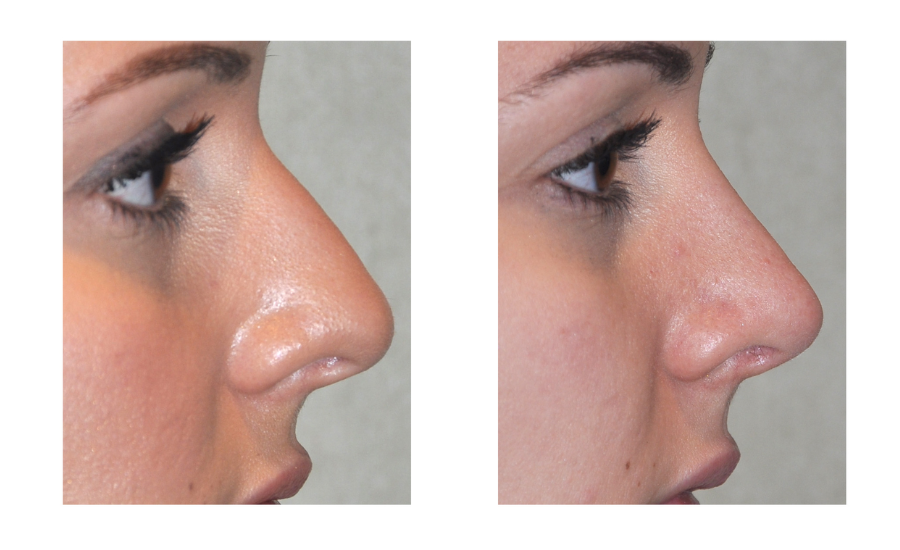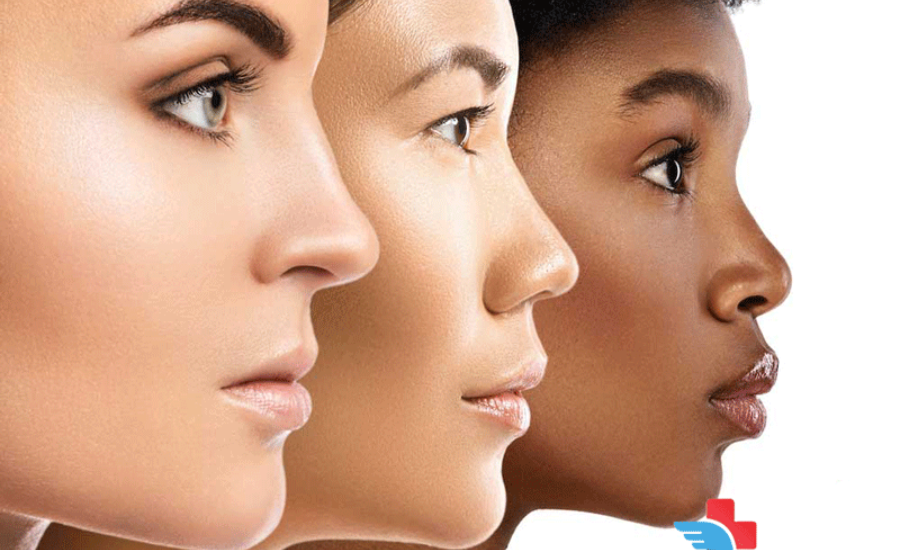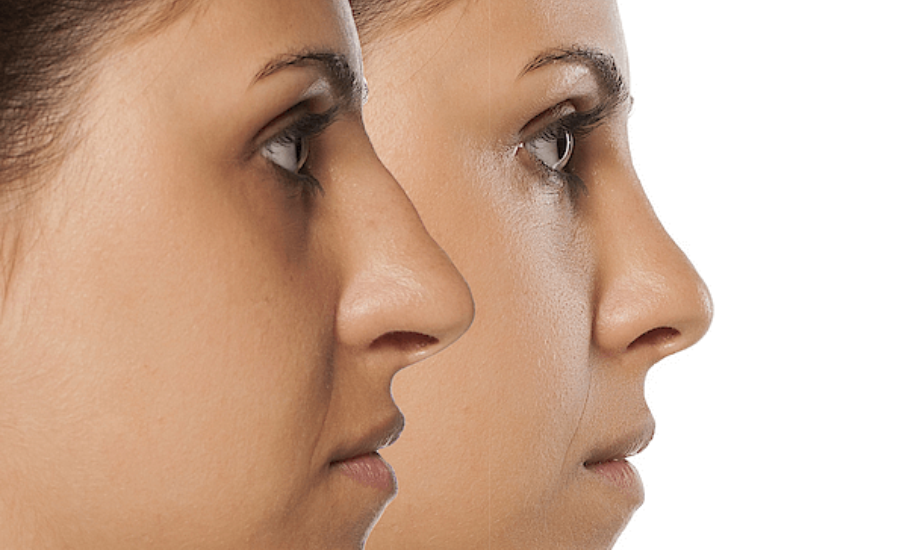EXPLORING THE BEAUTY AND SIGNIFICANCE OF THE GREEK NOSE
Throughout history, certain physical attributes have captured our fascination and come to represent beauty and grace. One such feature is the Greek nose, which has held a special allure from ancient times to the present. The Greek nose is characterized by its straight bridge, slender shape, and delicate tip, and it has come to symbolize sophistication and aesthetic charm. Modern beauty standards are shaped by Greek mythology, history, and culture.
In this article, we will delve into the captivating history, mythologies, and aesthetics surrounding the Greek nose. We will explore its origins, its importance in Greek mythology, its cultural impact, and the scientific aspects related to different types of noses. Join us on this journey as we unravel the mysteries and celebrate the timeless appeal of the Greek nose.
UNDERSTANDING NOSE TYPES

There are several nose shapes and sizes. An individual’s appearance is influenced by their nose type.
Let’s explore the fascinating world of nose types and their distinguishing features.
Greek nose: The Greek nose is renowned for its distinct features. It typically exhibits a straight bridge, a slender shape, and a delicate tip. The Greek nose has been admired for its elegance and refinement, and it gained popularity through its portrayal in ancient Greek art. This nose type continues to influence beauty standards in various societies.
Roman nose: One common type of nose is the Roman nose. It is often recognized by its robust and prominent bridge, which creates a slight curve or bump. This nose shape has been associated with strength and power throughout history. In fact, notable historical figures like Julius Caesar were believed to have had Roman noses.
Snub nose: If we shift our attention to the snub nose, we encounter a nose that exudes charm and youthfulness. This nose type is characterized by a short bridge and a slightly upturned tip, creating a cute and compact appearance. People with snub noses are often perceived as friendly and approachable.
Aquiline nose: In contrast, the aquiline nose, also known as the “eagle nose,” is distinguished by its prominent bridge and a downward curve at the tip. This nose shape has been associated with nobility and regal qualities throughout history. Noteworthy figures, such as Cleopatra, are believed to have possessed aquiline noses.
Bumpy nose: A bumpy or crooked nose is usually caused by an injury, but it can also be a natural trait inherited from parents, where there is excess growth of cartilage. Such a nose may appear to deviate to one side or have noticeable bumps. Fixing a crooked or bumpy nose requires a complex reconstruction procedure, and it should only be performed by a skilled plastic surgeon who specializes in nose reconstruction.
Hawk Nose: A hawk nose shape is akin to a Roman nose, but it typically has a narrower bridge and a more pointed tip. Hawk noses often have a curved structure, resembling the hooked beak of a hawk, which is something that many people don’t like about them. Fortunately, a rhinoplasty procedure can help to refine and straighten the nose, addressing these concerns and providing a smoother appearance.
Fleshy Nose: Fleshy noses are frequently observed in men, characterized by their prominent and broad appearance. Individuals with a fleshy nose often consider undergoing rhinoplasty surgery to refine the tip and sides of the nose, aiming to achieve a more defined and shapely look.
These are just a few examples of the diverse nose types that exist. Each nose shape contributes to an individual’s unique facial features, enhancing their overall appearance. By understanding the different nose types, we can appreciate the beauty of human diversity. It is a reminder that there is no singular standard of beauty, and every nose has its own distinctive allure. Each nose tells a narrative and contributes to our identity.
WHICH TYPE OF NOSE IS MOST ATTRACTIVE?

Beauty is subjective, and determining which nose is more attractive can be challenging. Each nose possesses unique beauty, but many individuals consider the Greek nose the epitome of beauty. It resembles the meticulously crafted Greek sculptures, exhibiting a sense of perfection and harmony in its proportions.
However, while the desire for a Greek nose is common, there are others who aspire to have a celestial nose. The celestial nose, reminiscent of the cherubic angels, is characterized by its petite size and a subtle dip in the bridge. This nose type can lend a divine touch to any face, which is why many individuals opt for this nose shape through plastic surgery, in pursuit of their dream appearance.
THE GREEK NOSE PHENOMENON
Delving into the realm of beauty and aesthetics, the Greek nose stands out as a fascinating subject of intrigue. With its unique characteristics and cultural significance, the Greek nose has captivated the attention of people across generations and continues to be an influential aspect of our perception of beauty.
Origins of the Greek Nose:
In ancient Greek art, the Greek nose was idealized and glorified. The sculptors of that time often depicted individuals with specific nose features, such as a straight bridge, narrow shape, and delicate tip, giving rise to the cultural phenomenon of the Greek nose.
Defining Features of the Greek Nose:
The Greek nose is characterized by its distinct attributes. The straight bridge creates a sense of elegance and symmetry, while the narrow shape adds a touch of refinement and balance. The soft tip further enhances the overall aesthetics, contributing to the allure of the Greek nose.
Cultural Significance and Historical Context:
The Greek nose holds immense cultural significance, not only in ancient Greece but also in subsequent societies influenced by Greek civilization. In ancient Greece, it was considered a mark of beauty, representing classical ideals of aesthetics. Its association with ancient Greek culture, known for its contributions to art, philosophy, and civilization, adds depth and symbolism to its significance.
Evolution of Beauty Ideals:
Throughout history, the Greek nose has been revered and sought after as a symbol of beauty. Its influence can be seen in Western beauty standards, where its elegant and proportionate qualities continue to be admired. The Greek nose has had a lasting impact on our perception of facial aesthetics and continues to inspire trends and interpretations in the realm of beauty.
The Greek Nose in Contemporary Society:
In modern times, the allure of the Greek nose has not diminished. It has inspired fashion trends, influenced the modeling industry, and left its mark in the field of cosmetic surgery. Many individuals seek rhinoplasty procedures to achieve the aesthetic appeal associated with the Greek nose.
Embracing Diversity and Individual Beauty:
While the Greek nose holds a prominent place in the realm of beauty, it is essential to embrace the diversity of nose shapes and celebrate the uniqueness of each individual. Beauty comes in various forms, and every nose shape carries its own charm and character.
THE GREEK NOSE IN GREEK MYTHOLOGY
Greek mythology is filled with fascinating tales of gods and heroes, each possessing distinct characteristics that often extend to their physical features. In this section, we will explore the intriguing connections between noses and the divine and heroic figures of Greek mythology.
The gods and their noses:
In Greek mythology, the gods were depicted with extraordinary attributes, including their noses. Although not explicitly mentioned in every story, their physical appearance often reflected their divine nature and power. Let’s delve into some examples of the gods and their notable noses.
Heroes and their distinct noses:
Greek mythology is replete with legendary heroes, each with their own distinctive features that set them apart. These heroes were often associated with specific nose shapes that further accentuated their heroic qualities. Let’s discover the intriguing tales of heroes and their unique noses.
CULTURAL SIGNIFICANCE OF THE GREEK NOSE

The cultural significance of the Greek nose extends far beyond its physical attributes. In ancient Greece, the Greek nose was considered a mark of beauty and an embodiment of classical aesthetics. It held a prominent place in the idealized standards of physical attractiveness.
The straight bridge, narrow shape, and delicate tip of the Greek nose were seen as harmonious and refined, reflecting the pursuit of balance and elegance in Greek culture. This idealization of the Greek nose has had a lasting impact on Western beauty standards, influencing perceptions of facial aesthetics even today. The cultural significance of the Greek nose is not confined to its association with beauty ideals alone.
It has also played a role in art and literature, being depicted in ancient Greek sculptures and finding mention in notable literary works. The Greek nose, with its historical and cultural symbolism, continues to evoke a sense of sophistication and refinement, reminding us of the enduring influence of ancient Greek civilization on our perceptions of beauty and aesthetics.
THE SCIENCE BEHIND NOSE TYPES
Different noses have different forms and sizes. In this section, we will explore the scientific aspects behind nose types, delving into the fascinating realm of genetics, climate adaptation, and the intriguing diversity of human features.
Genetics and Nose Shape:
A combination of genetic factors influences the shape of our noses. The structure and development of nasal bones, cartilage, and soft tissues depend on genes. Understanding the inheritance patterns and genetic variations associated with nose shape can shed light on the diversity we observe in different individuals and populations.

Inheritance Patterns:
Nose shape, like other physical traits, can be inherited from our parents. Various genes contribute to the development of nose structures, and their combination from both parents influences the final nose shape of an individual. Exploring the inheritance patterns helps unravel the complex genetic mechanisms behind nose types and the inheritance of specific features.
Genetic Variations and Ethnic Diversity:
Different ethnic groups exhibit variations in nose shape, highlighting the role of genetic diversity in shaping these physical traits. Factors such as geographical location and historical migration patterns have contributed to the evolution of distinct nose types among different populations. Studying these genetic variations provides insights into the connections between nose types and ethnic diversity.
Nose Shape and Climate Adaptation:
The relationship between nose shape and climate adaptation has long intrigued researchers. Nose form may have adapted to varied climates, according to certain studies. In colder climates with drier air, narrower noses and nostrils are more common. In contrast, broader noses with wider nostrils may be more common in populations from warmer and more humid regions. Exploring these theories and scientific studies deepens our understanding of the complex interplay between nose shape and environmental factors.
Evolutionary Significance:
The diversity of nose types across populations raises questions about the evolutionary significance of these variations. Researchers continue to investigate whether specific nose shapes have provided any survival advantages or conferred benefits in terms of respiratory functions, such as air conditioning or filtering. By examining the evolutionary history of nose types, we can gain insights into their adaptive value and potential functional roles.
COSMETIC PROCEDURES AND THE GREEK NOSE
Cosmetic procedures have become increasingly popular in shaping and enhancing physical features, and the Greek nose has not been exempt from this trend. In this section, we will explore the relationship between cosmetic procedures and the Greek nose, examining its historical development, aesthetic considerations, and the cultural implications surrounding these procedures.
Rhinoplasty and the Greek Nose
Rhinoplasty, nose surgery, has a lengthy history. However, cosmetic rhinoplasty became prominent throughout the Renaissance. Today, many individuals seek rhinoplasty to achieve the aesthetic appeal associated with the Greek nose. We will delve into the historical development of rhinoplasty and its connection to the pursuit of Greek nose aesthetics.
Greek Nose Aesthetics in Contemporary Cosmetic Surgery
In modern cosmetic surgery, the Greek nose continues to be admired for its elegant and refined features. Surgeons and patients often discuss Greek nose aesthetics as a desired outcome for rhinoplasty procedures. This involves creating a straight bridge, narrowing the shape, and refining the tip to achieve the harmonious and balanced appearance associated with the Greek nose. We will explore the techniques and considerations involved in achieving these desired outcomes.
Ethical Considerations and Cultural Implications
The pursuit of Greek nose aesthetics through cosmetic procedures raises important ethical considerations and cultural implications. Balancing individual desires for certain nose types with cultural heritage and societal norms can be complex. Additionally, there are concerns about cultural appropriation when specific ethnic features, such as the Greek nose, are sought after by individuals from different backgrounds. We will delve into the ethical considerations and cultural implications surrounding the desire for the Greek nose in cosmetic procedures.
ROMAN NOSE VS GREEK NOSE

Civilizational Link:
Every civilization leaves traces of its achievements for future generations. These cultural legacies include exquisite arts, literature, sculptures, religious structures, and architectural marvels.
These artworks and sculptures from past and present cultures connect them. Today, tourists visit magnificent statues of Roman and Greek emperors and queens. These monumental examples suggest that the facial traits shown were typical in those civilizations.
Thus, we can understand how “Roman nose shapes” and “Greek nose shapes” came to be and why their civilizations are connected.
What Does A Roman Nose Look Like?
Roman noses have a high bridge that looks like a small curvature.
A visible, elevated ridge terminates in a gently hooked curve on the nose. The nasal bridge has a downward slope and sticks out from the face.
Italians, South Asians, and even male Native American tribal members can have Roman nose forms. Roman noses in women sometimes resemble straight button noses, which are cute.
Roman nose shapes symbolize grace, power, elegance, and grandeur in many people’s eyes.
What Does A Greek Nose Look Like?
Greek noses are valued by many nose kinds. A Greek nose form, sometimes called a “straight nose” or “Mediterranean nose,” is attractive.
Greek noses are straight and bump-free. Perfect geometrically. The nasal bridge stretches from the eyebrows to the tip, with narrower nostrils. Greek noses resemble reversed 7s.
Greek nose forms are popular for nose jobs and other cosmetic operations for men and women.
Greek noses are smaller in women. Greek female nose shapes are popular among beauty-conscious women who want to change their noses. Greek noses are beautiful because they are slender.
Monica Bellucci, Demi Moore, and Angelina Jolie are famous Hollywood actresses with female Greek noses, furthering its appeal.
Major Differences Between Greek And Roman Nose
Roman and Grecian noses differ, as previously established. Roman noses have a small bend, whereas Grecian noses have an almost flawless tip.
Some studies indicate that Greek noses lack concavity or “depression.” The forehead and nose mix seamlessly.
Scholars say the Greek nose is idealistic, often mirrored in ancient sculptures. Romans were more realistic in their view of human beauty, and their art often reflected this. In their cultural depictions, they showed nose features and facial faults honestly.
Researchers agree that Roman and Greek nose forms are attractive because they extend from the facial plane to form a pyramid-like structure.
THE GREEK NOSE IN FASHION AND POP CULTURE
The allure of the Greek nose has transcended the realms of ancient beauty ideals and mythology, making its mark in the dynamic world of fashion and pop culture. This unique nose type has become a source of inspiration for designers, models, and artists, influencing trends and shaping the perception of beauty. In the fashion industry, the Greek nose has gained recognition for its elegant and refined features.
Fashion models with Greek noses have graced runways and magazines, showcasing the enduring appeal of this nose type. Designers often seek models with Greek nose aesthetics to enhance their creations and bring a sense of sophistication to their designs. Beyond the fashion industry, the influence of the Greek nose can also be seen in popular culture, including film and media.
Iconic characters with Greek noses have captured our imagination on the silver screen, leaving a lasting impact on how the Greek nose is perceived and celebrated. However, it is important to note that representations in fashion and pop culture should celebrate the diversity of nose shapes and avoid perpetuating narrow beauty standards. The Greek nose, with its historical significance and aesthetic charm, continues to leave an indelible impression in the world of fashion and pop culture, reminding us of the enduring appeal of this timeless nose type.
DEBUNKING MYTHS AND STEREOTYPES
In our exploration of the Greek nose, it is crucial to address and debunk the myths and stereotypes associated with this nose type. One common misconception is the belief that specific nose shapes are indicative of intelligence or personality traits. No scientific evidence supports such statements.
Nose shape does not determine one’s intellectual capabilities or character. Additionally, perpetuating stereotypes about the Greek nose can lead to biases and prejudices. It is essential to recognize that beauty comes in diverse forms, and no single nose shape is superior or inferior to others.
Embracing the beauty of unique nose shapes and challenging narrow beauty standards is key to fostering inclusivity and celebrating individuality. By debunking myths and stereotypes, we can promote a more inclusive and accepting society that appreciates the diverse beauty found in every individual’s features.
CAN THE SHAPE OF THE NOSE BE CHANGED?

Rhinoplasty is the best approach to changing the nose’s size and shape. Advanced surgical procedures and skilled nose surgeons can help patients attain their desired nose shape. It’s crucial to have realistic expectations for rhinoplasty.
Non-surgical rhinoplasty may be used as a trial to see if the nose shape modifications are satisfactory. Nose reshaping and volume enhancement are possible with this non-surgical treatment. Rhinoplasty without surgery lasts 18 months. If the patient loves the results and wants a permanent fix, surgical rhinoplasty may be done.
The nose can be reshaped permanently through surgical rhinoplasty. Patients can change their nose shape permanently with this operation, performed by experienced nose surgeons.
HOW TO MAKE YOUR NOSE SMALLER?
Rhinoplasty patients often want their noses to be smaller. In answer to this request, a reduction rhinoplasty operation can effectively reduce the nose’s overall size or target a specific area for size and shape reduction.
Your rhinoplasty surgeon will customize a treatment plan during your consultation. This design will calculate the nose’s cartilage and bone removal. The surgeon can reduce the size of your nose by carefully removing tissues.
Reduction rhinoplasty aims to achieve a harmonious balance between the nose and other facial features for a natural and attractive result. With your rhinoplasty surgeon’s guidance, you can boldly pursue a smaller nose that improves your face proportions.
PEOPLE ALSO ASK (FAQS)
Here Are Some (FAQs) About the Greek Nose:
What is the origin of the term “Greek nose”?
“Greek nose” refers to a specific nose shape characterized by a straight bridge, narrow shape, and delicate tip. It gained its association with ancient Greek aesthetics due to the prevalence of this nose type in ancient Greek art and sculptures. The term “Greek nose” emerged to describe this particular aesthetic and has since become a commonly recognized term.
Can anyone have a Greek nose, regardless of heritage?
No of their ancestry, anyone can have a Greek nose. Nose shape is governed by a combination of hereditary variables and can be found in people of different ethnicities. Beauty comes in many shapes, and nose shape is unique to each person.
Are Greek noses considered more attractive?
Beauty standards vary across cultures and individuals, so the perception of attractiveness is subjective. The Greek nose has been historically celebrated as a mark of beauty in ancient Greece and has influenced beauty ideals in Western societies. However, beauty is subjective and there is no uniform criterion.
Is there a connection between nose shape and personality?
No scientific evidence links nose form to personality. An individual’s personality is not affected by nose shape. The nose form does not adequately reflect the personality, which is impacted by many complicated circumstances.
How can one embrace their unique nose shape?
Embracing your unique nose shape begins with self-acceptance and self-love. Recognize that beauty is diverse and that each person’s features make them distinct. Surround yourself with positive influences and celebrate diverse representations of beauty. Remember that your nose shape is simply one part of your entire look and does not define your beauty or worth. Focus on building confidence and embracing your unique traits.
CONCLUSION
With its rich history, cultural significance, and aesthetic appeal, the Greek nose has captured us and influenced beauty standards. From its origins in ancient Greek art to its presence in contemporary fashion and cosmetic procedures, the Greek nose holds a timeless allure. However, it is important to approach the topic with sensitivity and embrace the diversity of nose shapes, recognizing that beauty encompasses a wide range of features. Debunking myths and stereotypes associated with the Greek nose is crucial in fostering inclusivity and celebrating individuality. The Greek nose is beautiful because it symbolizes human diversity as well as its physical traits. By appreciating and accepting the unique features that make each of us who we are, we can cultivate a more inclusive and accepting society that celebrates the beauty found in all nose types and in the individuality of every person.
Stay in touch to get more updates & alerts on Discover Tribune!






